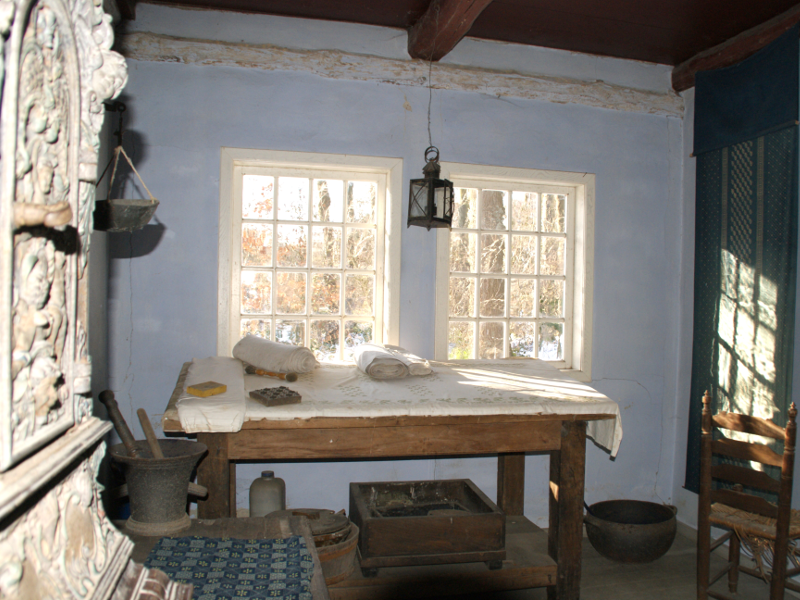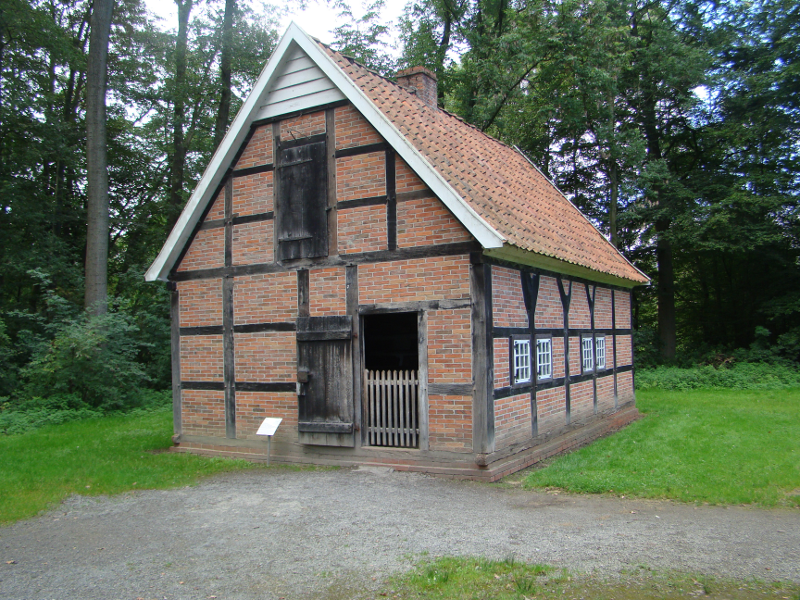Foeth Dyes Workshop from Menslage
Foeth Dyes Workshop from Menslage (Osnabrück County), built 1847. Re-constructed at the open-air museum in 1968

Dyed consumer goods
Trade and commerce enjoyed some good years in many areas in the country in the 19th century. The establishment of new businesses, like Foeth Dyes, in the 3000-resident village of Menslage is an expression of a growing market for private consumer goods like clothing and household accessories. Thus, Bernhard Foeth also opened his new business with journeymen and an apprentice and invested 400 Reichsthaler, which was a considerable sum at that time, in the workshop equipment. The family income was guaranteed until well into the next century with this investment. Ludwig Foeth, the son who had taken over the workshop, first believed that the dying operation had to be closed in 1917 after the World War had started.

The blue dye from India
Indigo was the basic material for dying textiles blue; a material that exemplified the ideal of a global economy for pre-industrial commerce. Until the 17th century, only the Isatis tinctoria was known for blue dyes in Europe. Only after Vasco da Gama discovered the sea route to India did people begin importing the expensive powder that was harvested from the Faboideae family of plants on the sub-continent. The dying process used motif stamps, which people used for pressing the dye paste into the cloth. This imprinted pattern remained colorless, when the cloth was dipped into the indigo solution. The dye solution was light yellow at first, before it oxidized almost a day later and the dyed cloth allowed the powerful blue to shine forth.
